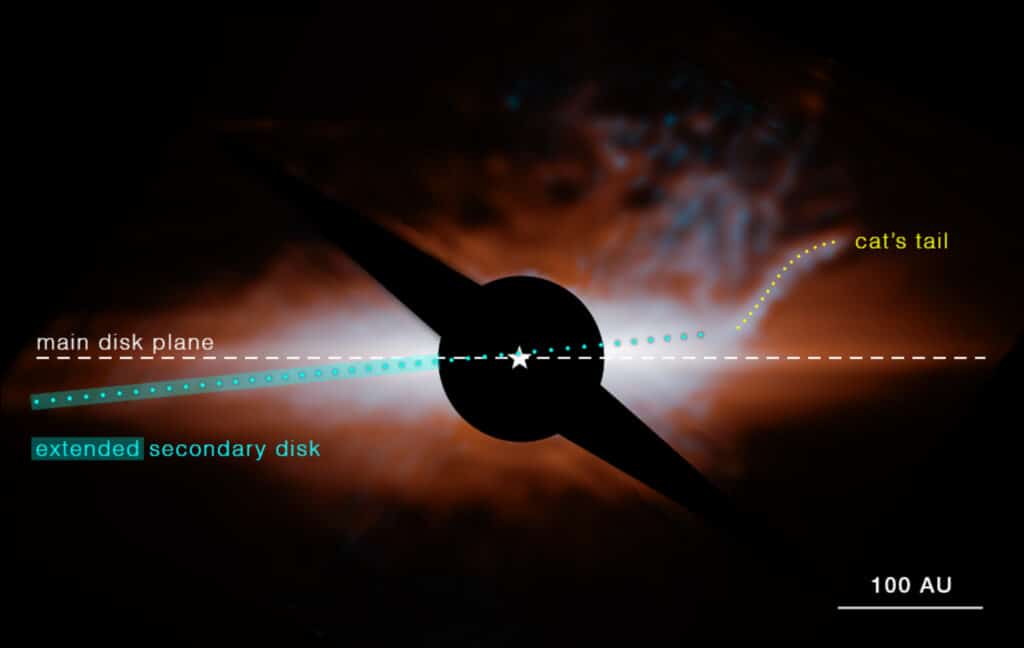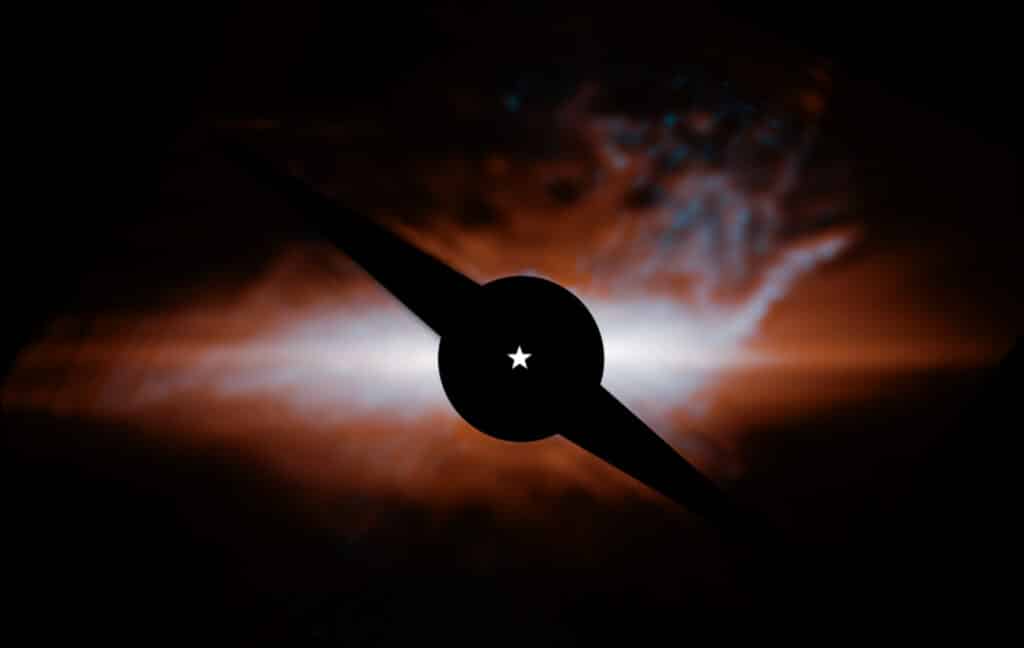A young planetary system some 63 light-years away from Earth isn’t giving off any grumpy vibes. NASA’s James Webb Space Telescope (JWST) has recently revealed a previously unseen and intriguing structure from Beta Pictoris — a dusty “cat’s tail”! The discovery adds a significant layer to our understanding of the complex dynamics of planetary systems beyond our own.
Beta Pictoris has long captivated astronomers as the first star system outside our own to have a dust disk imaged, indicative of the chaotic collisions between asteroids, comets, and other planetary building blocks. A second, inclined debris disk was also observed, showcasing the system’s dynamic environment. Now, the JWST, leveraging its unparalleled sensitivity and spatial resolution, has identified a new feature within this system: a sharply inclined dust structure extending from the system’s secondary debris disk, likened to a cat’s tail.
“Beta Pictoris is the debris disk that has it all: It has a really bright, close star that we can study very well, and a complex cirumstellar environment with a multi-component disk, exocomets, and two imaged exoplanets,” says study lead author Isabel Rebollido, from the Astrobiology Center in Spain, in a media release. “While there have been previous observations from the ground in this wavelength range, they did not have the sensitivity and the spatial resolution that we now have with Webb, so they didn’t detect this feature.”

Utilizing JWST’s Near-Infrared Camera (NIRCam) and Mid-Infrared Instrument (MIRI), the team embarked on a detailed examination of Beta Pic’s complex circumstellar environment. The observations not only confirmed the presence of the main and secondary debris disks but also unveiled the cat’s tail, a structure that only became visible within the mid-infrared spectrum captured by MIRI.
“We didn’t expect Webb to reveal that there are two different types of material around Beta Pic, but MIRI clearly showed us that the material of the secondary disk and cat’s tail is hotter than the main disk,” explains study co-author Christopher Stark, of NASA’s Goddard Space Flight Center in Greenbelt, Maryland. “The dust that forms that disk and tail must be very dark, so we don’t easily see it at visible wavelengths — but in the mid-infrared, it’s glowing.”
Researchers suggest that the dust comprises highly porous “organic refractory material,” akin to the dark, carbon-rich substances found on comets and asteroids within our solar system, including the material sampled from asteroid Bennu by NASA’s OSIRIS-REx mission.
The origin of the cat’s tail’s unique curvature remains a topic for further investigation. The team’s current hypothesis posits that this feature could be the aftermath of a collision event that occurred roughly 100 years ago, leading to an outpouring of dust. The interaction between stellar radiation and the dust particles creates the observed tendril-like structure, with smaller, lighter particles being pushed away more rapidly than their heavier counterparts.
“The cat’s tail feature is highly unusual, and reproducing the curvature with a dynamical model was difficult,” notes Stark. “Our model requires dust that can be pushed out of the system extremely rapidly, which again suggests it’s made of organic refractory material.”
This discovery not only underscores the dynamism and chaos within the Beta Pictoris system but also illustrates the unmatched potential of the JWST in unveiling the secrets of planetary systems. As the most advanced space science observatory to date, JWST continues to provide unprecedented insights into the universe, offering a new perspective on well-studied celestial objects and phenomena.
The findings were presented at the 243rd meeting of the American Astronomical Society in New Orleans, marking a significant milestone in the exploration of the cosmos and the continuous quest to understand the mechanisms shaping planetary systems.













Comments